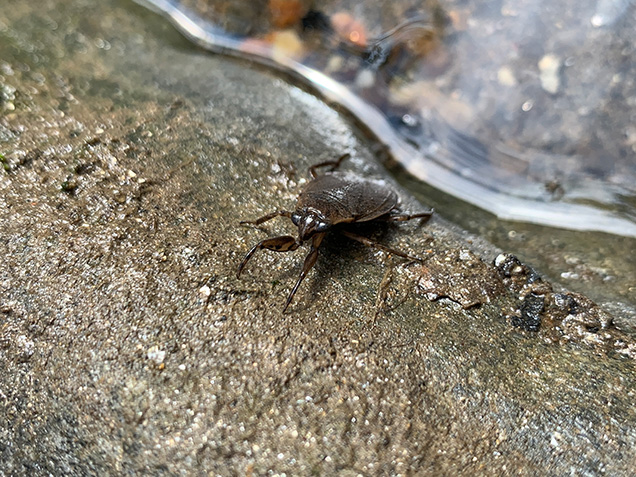Macroinvertebrates Projects

This map highlights some of our projects' sampling sites in the Delaware River Watershed. Read more about specific projects below.
Factors influencing temperature and flow stability in the Headwater streams of the upper Delaware watershed and potential consequences for genetic biodiversity and ecosystem function.
In August of 2024, we were awarded a Delaware Watershed Conservation Fund grant to continue researching headwater streams in the Delaware. This work will examine how temperature and flow fluctuations impact genetic biodiversity and function and will then use the data we collect to create a watershed geospatial model to predict headwater stream resilience in response to temperature changes and to identify areas in need of forest conservation. Using eDNA we will detect the presence or absence of at-risk species like Eastern Brook Trout and create a species list of bacteria, fungi and invertebrates. Field work for this project will begin in 2025, stay tuned for more details as they emerge.
Checklist of Pennsylvania Chironomidae
The Chironomidae family’s distribution and diversity in the northeast United States is not well understood, however the family is large and ecologically important. This project creates a list of Chironomidae species in Pennsylvania, compiles a list of species likely in PA, provides up to date species names, and creates a reference collection. To do this, data from the scientific literature, museum collections, government surveys, and unpublished datasets will be compiled. Additionally, specimens will be collected from across the state and sent for genetic barcoding. Having this checklist would be an invaluable asset for researchers and conservationists as, without knowing the diversity of what is in the region, it is much more difficult to study and conserve this ecologically important group of insects.
Evaluating Headwater Biodiversity, Vulnerability, and Potential Resilience to Inform Conservation in the Delaware Basin
In partnership with Commonwealth University – Bloomsburg, Friends of the Upper Delaware River, and
Water Policy Pathways. We are measuring in-stream metabolism, water chemistry and habitat as well as collecting eDNA, and tissue barcoding collected macroinvertebrates to evaluate the potentially hidden diversity in Delaware Basin headwater streams and their potential for protection and conservation. Working with community groups including outdoor recreation clubs, we will seek out input on streams of interest for presence of vulnerable taxa and potential needs for protection or restoration. Our results aim to provide some baseline information relative to potential impacts of climate change within the region.
This project is made possible through a grant from the National Fish and Wildlife Foundation, and PA DEP Growing Greener Program.
Freshwater Snail Inventory at Upper Delaware Scenic and Recreational River
In partnership with National Park Service (Upper Delaware Scenic and Recreational River) funded by Department of the Interior.
Inventory of the freshwater snails of UPDE to determine distribution and community structure. We are also utilizing genetic research techniques (tissue barcoding and eDNA) to identify invasive species and their distribution. This project was highlighted in the ANSP blog in April of 2023.
Uptake and bioaccumulation/biomagnification of subsurface-derived PFASs by lotic, warm water food webs
In partnership with Biogeochemistry Section, Oak Ridge National Laboratory, Temple University, and Lockhaven University, funded by SERDP.
Project aims to investigate the extent, pathways, and rates by which PFAS are taken up by aquatic organisms and transferred through stream food webs. Results will support the quantitative prediction and assessment of the risks of PFAS to aquatic wildlife and humans as well as regulatory efforts by providing, for example, bioaccumulation factors and relative exposure mechanisms for fishes that may be consumed by humans.
Cobbs Creek Stormwater Control through Resident Actions
In partnership with Darby Creek Valley Association funded by Commonwealth of Pennsylvania Department of Environmental Protection.
Macroinvertebrate community assessment of tributaries of Cobbs Creek to aid in stormwater planning and management.
Funded by The Lower Neches Valley Authority (LNVA)
During October 2021, the Patrick Center for Environmental Research of the Academy of Natural Sciences completed the seventh in a series of biological and water quality surveys. The Macroinvertebrate team joined the Fisheries and Phycology Sections to sample 5 stations along the Neches River. Previous studies were performed in 1953, 1956, 1960, 1973, 1996, and 2003.”

